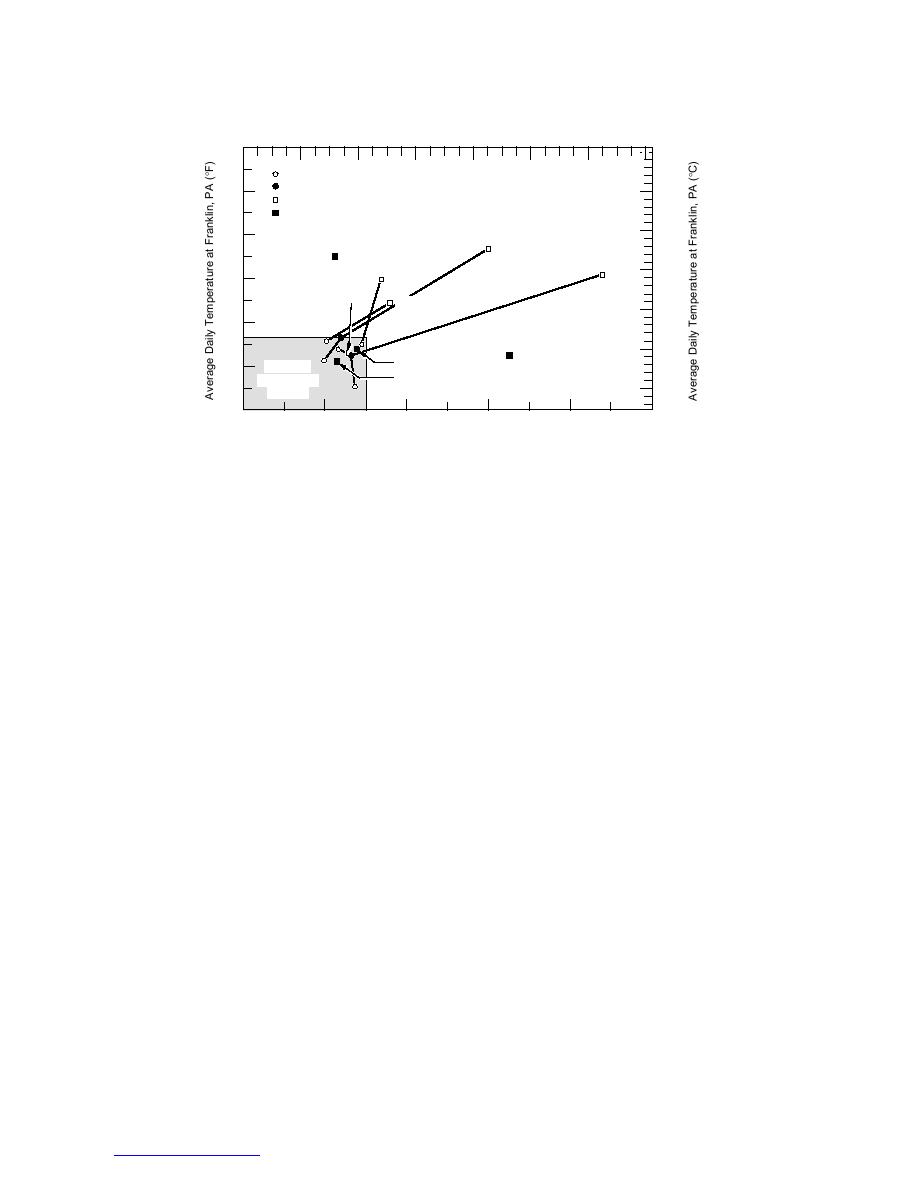
Daily Mean Allegheny River Flow at West Hickory, PA (m3/s)
0
40
80
120
160
200
240
280
60
15
First Observation of 100% Ice Cover
Intermediate Observation
10
50
Last Observation
Only Day Observed with 100% Coverage in That Period
5
40
1988
1989
0
1990
30
1987
1992
1989
5
20
10
1991
1988
Phase 2
10
1993
Target Flow
15
Control
0
10,000
0
2,000
4,000
6,000
8,000
Daily Mean Allegheny River Flow at West Hickory, PA (ft3/s)
Figure 3. Observed river discharge and air temperatures at the Allegheny River
ice boom during periods of complete ice cover formation. (After Daly and Gooch
1994.)
discharge of about 200 m3/s, conditions at the
Early winter flow regulation to
control freezeup ice jam flooding
boom site are unfavorable for ice retention, with
Controlling river discharge during the freezeup
a velocity of about 0.61 m/s and a Froude number
period can reduce freezeup ice jams and related
of about 0.14. Through analysis of field observed
flooding. Also, by minimizing the volume of ice
data, Daly and Gooch (1994) found that, since
formed over the course of the winter, the severity
1988, a 100% ice cover typically forms behind the
of breakup ice jam flooding can be reduced. The
boom when average daily air temperature is
below about 8C, and Allegheny River discharge
operational methods and objectives are similar to
those described in the previous section. On
upstream at West Hickory, Pennsylvania, is below
about 85 m3/s (Fig. 3). Within this flow range, the
smaller, steeper poolriffle rivers, flow may be
reduced at an upstream dam to allow an ice cover
average water velocity at the boom is about 0.40
to form on downstream reaches, either naturally
m/s and the Froude number about 0.1. The infor-
or behind an ice-retention structure, such a weir
mation shown in Figure 3 helps water controllers
or boom.
at the Pittsburgh District time the flow cutback at
In 1982, the Pittsburgh District of the U.S. Army
Kinzua Dam. The timing and magnitude of the
Corps of Engineers installed an ice boom on the
flow cutback for ice control must be weighed
Allegheny River immediately upstream of the Oil
against other regulatory objectives, such as pro-
Creek confluence at Oil City, Pennsylvania, to ini-
viding flood storage capacity and maintaining
tiate a stable ice cover and reduce the volume of
in-stream flow minimums for fish.
frazil deposited in the confluence area each win-
ter. Before the boom was installed and an ice con-
Early winter flow control for
trol weir built on Oil Creek in 1989, the freezeup
winter navigation
ice jam on the main stem Allegheny often blocked
Most of the major rivers in the U.S. with win-
the breakup ice run on Oil Creek, resulting in an
ter navigation are controlled by stage-regulated
ice jam at the creek confluence and severe ice jam
lock and dam projects on their main stems, with
floods in Oil City.
discharge-regulated flood control projects on their
Successful performance of the boom depends
tributaries. Although flow control for ice cover
on flow reductions at the Kinzua Dam, located on
formation has potential benefits to winter naviga-
the Allegheny, 106 km upstream, during the ini-
tion, there are few, if any, documented cases of its
tial ice-formation period. At the average winter
use. For rivers with winter-long navigation, the
6
Return to contents pg



 Previous Page
Previous Page
